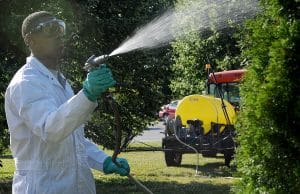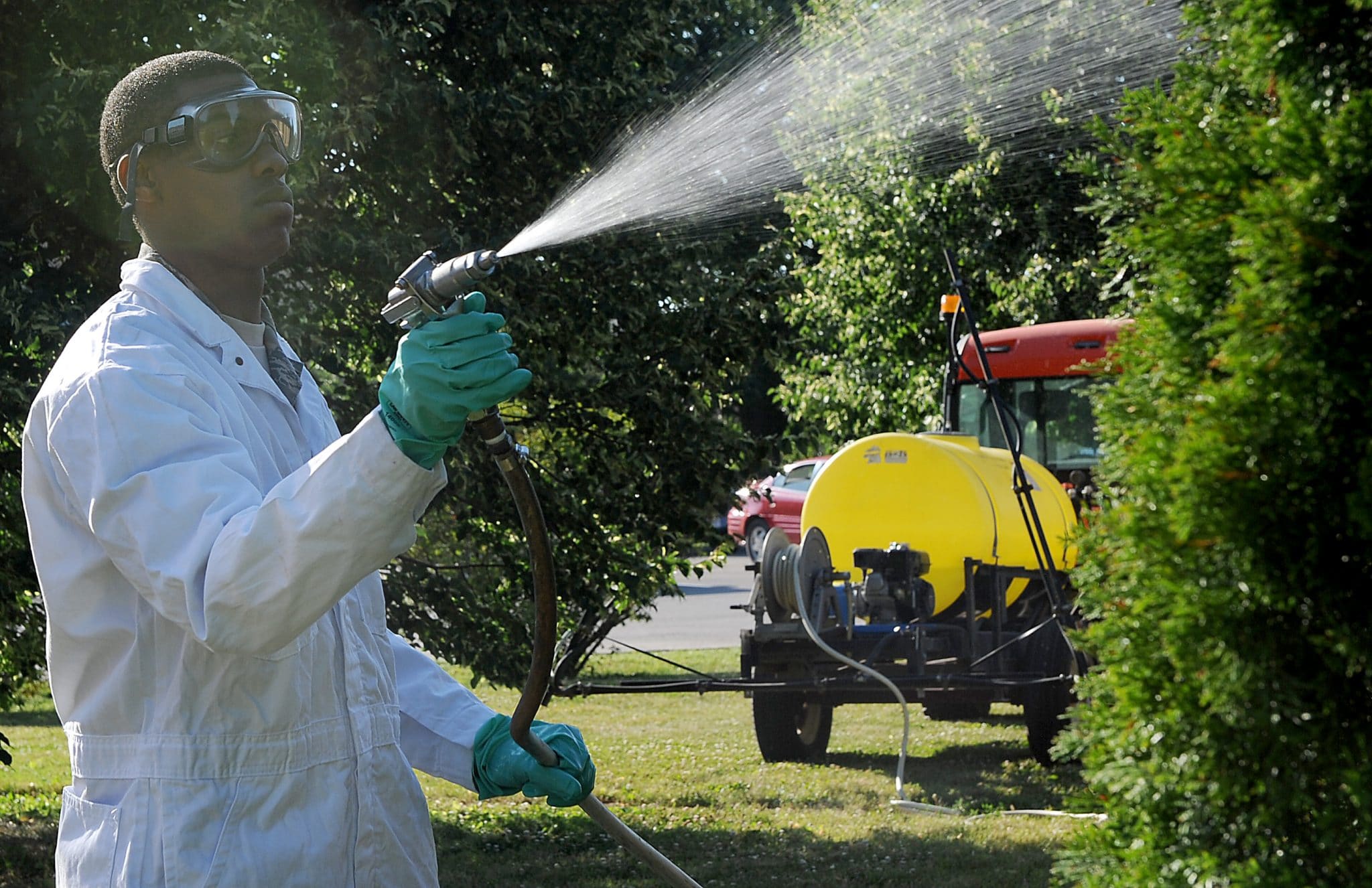Will pesticides kill plants?
Pesticides are used to protect your plants and garden but when they’re used in the wrong way, they can lead to plant injury.
Pesticides are toxic to pests that cause plant disease as well as weeds that choke plants. As a result, they can protect your garden or home damage. Due to their use, worldwide expenditures totaled nearly $56 billion in 2012. According to the US Environmental Protection Agency, between 2008 and 2012, expenditures on pesticides rose by 45%.
Disease-free plants such as fruit trees bear a lot of fruits. In fact, eating a juicy apple will not only explode your taste buds. But it will keep the doctor away. The question is, can pesticides kill plants?
In this post, we discuss if pesticides can kill plants, how they affect plants, the types of pesticides that affect plants, and more.
How Pesticides Affect Plants?
Pesticides prevent the spread of disease and repel insects. As a result, farmers will not lose the entire crops of the season. Also, the yield will not be affected.

Pesticides contain poisons in the form of synthetic compounds. While they protect your plants and home, when used in the wrong way, they can lead to plant injury.
This is common where the user fails to read or follow the instructions on the product label. The product label is a legal document required on every pesticide product produced and sold in the US. What you need to know is that the US EPA must approve the label.
Information contained on the label includes:
- Brand name
- Active ingredients
- Types of plants where the product may be used
- How much to use
- Pests targeted
- Required protective equipment and clothing
- Pre cautionary statements
- Emergency and first aid measures
What Types of Pesticides Affect Plants?
Ancient civilizations used pesticides to protect their crops from pests. For example, the ancient Sumerians used elemental sulfur to protect their plants. Medieval farmers used arsenic. The Greeks and Romans utilized ash, oil, sulfur, and other materials.

Today, the most common types of pesticides are:
- Herbicides for killing plants(weeds)
- Insecticides for repelling insects
- Rodenticides for killing mice and rats
- Fungicides for killing fungi
- Larvicides for larvae
- Bactericides for bacteria
An example of pesticides that affects plants are systemic herbicides. Designed to interfere with the plant’s growth by mimicking plant hormones, herbicides work throughout the plants. Although they take longer to act, they affect the growth and development of the plant, killing it eventually.
You also have other herbicides that kill plants on contact. These tend to act faster by damaging leaf cells desiccating the plant. Common types of herbicides include atrazine, dacthal, simazine, metolachlor, alachlor, and glyphosate.
How Do They Damage the Plants?
Plants absorb pesticides via the leaves and roots. One of the most common types of pesticides used to control weeds is herbicides. Based on studies, 70 to 80 million pounds of pesticides are sprayed on plants, trees, shrubs, and lawns in the US.
Weeds compete with crops for nutrients, water, space, and sunlight. By killing the weeds, farmers enhance crop quality. Pesticides work through a variety of modes. Since they mimic plant hormones, they work throughout the plant inhibiting its growth and development.
Apart from damaging leaf cells, some herbicides also inhibit seedling growth and seed germination. Others destroy stem tissue killing the plants eventually.
Do Plants Absorb Pesticides?
Yes, plants can absorb pesticides. The reason they can do so is that pesticides mimic plant hormones. When sprayed on the leaves and soil, the plants take up the pesticides (including the poisons and nutrients). What you need to know is that pesticides can translocate to other parts of the plant. This is common with systemic pesticides.
For non-systemic pesticides, they don’t move through the plants. This does not mean that they are not effective in killing pests and insects. The excellent news about non-systemic pesticides is that they are likely not to be taken into edible parts of the plant.
As such, the poisons in pesticides will not find their way on your plate.
How to Minimize Environmental Risk When Using Pesticides
The industrialization of the agricultural sector increases the use of pesticides to repel insects and improve crop yield. Pesticides are useful in controlling the spread of diseases among plants. However, their use is now known to cause a large number of adverse environmental and health effects.
Exposure of pesticides to the human body can be through ingestion, contact with the skin, and inhalation. Depending on the route of exposure, duration, and type of pesticides, the human body will suffer specific effects.
As you already know, pesticides get metabolized, excreted, and stored in body fat. This has numerous health effects. In a study, researchers found that chemical pesticides have dermatological, carcinogenic, and respiratory effects.
They also have gastrointestinal and endocrine effects. Exposure to pesticides can lead to hospitalization or even death. Residues of pesticides can be found in everyday foods and beverages. They include fruits, vegetables, water, fruit juices, refreshments, wine, and even animal feeds.
Concentration levels
In the majority of cases, the concentration levels do not exceed safe standards. When it comes to the environment, pesticides contaminate the turf, soil, and other vegetation. Also, apart from killing insects, they are harmful to birds, fish, and non-target plants. In a 2015 study titled “Effects of Pesticides on Environment,” the researchers discovered that excessive use of pesticides leads to the destruction of biodiversity.
According to the researchers, 80 to 90% of the applied pesticides can volatilize after a few days of application. The volatile pesticides evaporate into the air. As such, they cause harm to the non-target organism.
Pesticides have acute and chronic health effects on people. Examples of acute health effects include rashes, nausea, diarrhea, rashes, and stinging eyes. Chronic health effects include neurological toxicity and the disruption of the endocrine system.
Effects on farms
As a farmer, there are ways you can use to minimize the effects of pesticides on the environment. According to the US EPA, farmers must follow all requirements on the pesticide’s product labels. They should know which pesticides leach into groundwater and be aware of the depth of groundwater in the area. Farmers should keep pesticides out of gutters and storm drains.
In case of a spill, they should contain by cleaning it up immediately. It is essential to check the containers for leaks. When mixing pesticides, users need to use clean equipment. They should rinse the area with water but ensure the mixture does not enter sewers or storm drains. To do so, experts recommend rinsing the equipment on a solid surface.
Farmers need to follow label precautions to protect pollinators. If bees are present in the area, its recommended to apply pesticides at night. Why? It’s harmful to bees, and they do not forage at night. It’s important not to spray pesticides on your lawn.
Alternatives
Instead, experts recommend the use of landscaping techniques that increase native habitat. When it comes to rodents, use rodent baits formulated grain or peanut butter bait. You also have the option of placing a bait where non-target wildlife cannot get it.
You may find pesticide product labels have not specified the right wind speed during application. Well, experts recommend applying when wind speed is between 3 to 10 mph. For ground applications, make sure the nozzle height does not exceed 2 feet above the ground.
It should also not exceed the height of the crop canopy (not more than 2 feet from the ground). It is essential to use low pressure, large droplet sprayer. Do not apply pesticides before heavy rain. By doing so, you prevent pesticides from getting into the surface water or groundwater. It can affect other beneficial organisms like earthworms. Read more in this article to find out how pesticides affect earthworms.
Children and pets
Also, do not use more product than directed. Do not allow children or pets in treatment areas. This helps to prevent accidental exposures during application. You, too, should consider staying out of treated areas after application.
Don’t forget to ensure food, pet bowls, toys, and clothing are safely stored away from pesticide treatment.
How to Store and Dispose of the Product Safely
For example, farmers may use pesticides to repress the mycorrhizal fungi. What they don’t know is that the pesticides affect the plant’s ability to absorb minerals. It also destroys the plants’ first line of defense against virulent root diseases.
When this happens, the plants get exposed to plant feeding microbes and diseases. Pesticides can also cause poor root development and reduced plant growth. In fact, a 2011 study proved that pesticides affect plant growth.
Final Thoughts
Pesticides are expensive technology. How? When farmers rely on pesticides, it becomes an economic burden. How? Pests become resistant to pesticides. As such, farmers have to keep buying stronger pesticides to repel the pests.
Stronger pesticides mean more chemicals on our plates. To prevent pests from entering your garden or home, you can try non-chemical methods. For example, you can introduce beneficial insects or native plants. Such insects include ladybugs that prey on nuisance pests like aphids. You can use physical methods such as mulching, hand weeding, setting traps.
When it comes to rodents, we recommend using mechanical traps and flyswatters. If you have to use pesticides, read the product label. Make sure the product label has directions of use and list of target pests.
If necessary, ask for assistance from certified professionals.
